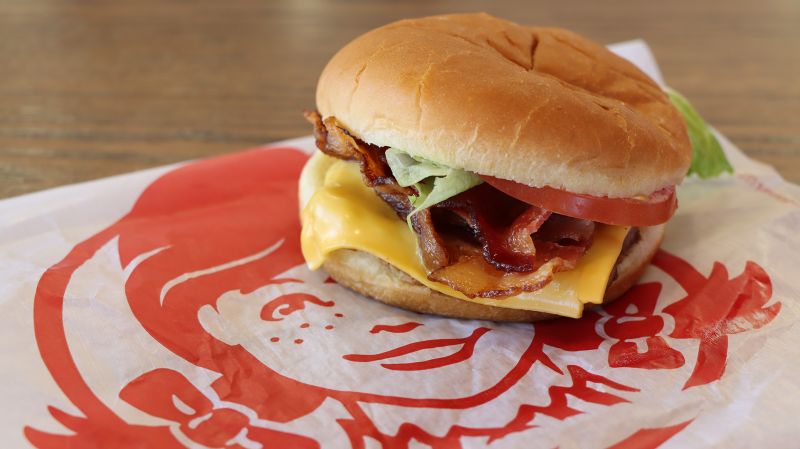Why We Are Triggered by Dynamic Pricing
Consumers can’t help but take it personally when “flexible” prices seem unfair

As people head out on summer vacations, they are likely paying more for hotels and airfare than they would in the off-season. For the most part, they accept the higher prices as fair. After all, they know they’re travelling when holiday demand is high.
But how do they feel when the price of their burger goes up during the lunch rush? Or when they pay more for a shovel after a major snowstorm? In these instances, customers might feel they’ve been unfairly treated.
Laurence Ashworth, the Distinguished Faculty Fellow of Marketing at Smith School of Business, who has long studied consumers’ perceptions of fairness, says these feelings are often a side effect of dynamic or surge pricing. This revenue management strategy involves setting flexible prices based on current market conditions.
In a recent study with Lindsay McShane of Carleton University and Peter Darke of York University, he found that feelings of unfairness can get deeply personal for consumers. They can feel disrespected and even threatened when they sense a company is taking advantage of them.
Perception is key
Ashworth says consumers often have a price in mind (or a sense of one) for what they should pay for an item or service. This is known as a “reference price.” If the price tag is higher than the reference price, consumers deem the cost as unfair. If the price is close to their reference price, they consider it fair. But when the price is lower than their reference price, they tend not to consider it “fairer” — but rather decide it offers good value.
“Things don’t linearly become fairer, fairer, fairer,” Ashworth says. “There’s an asymmetry in the way we perceive fairness. We’re much more likely to be aware of, and notice and respond to, unfairness than we are to fairness.”
The same principle applies to dynamic pricing. While dynamic pricing certainly has benefits to consumers when items have a lower price tag, people feel a strong sense of unfairness when prices are raised, Ashworth says.
“The problem with dynamic pricing is it is perfectly set up to activate these kinds of thoughts because the firm is offering the same thing at different prices,” he says. “When prices go up, people feel that the firm is getting more from them but has done nothing in return for the higher price. When prices go down, consumers are simply less likely to notice.”
Ashworth says consumers often think of fairness as getting what is merited. In their mind, he says, the higher price is seen as a “reward” for the company that it does not deserve — and at the consumers’ expense — which ultimately leads consumers to feel disrespected by the seller.
Taking it personally
In his latest research, Ashworth and his colleagues investigated people’s negative reactions to unfavourable price differentials (when the price a consumer has paid or considers paying is greater than a comparison price), and whether this reaction comes from feeling disrespected by the seller.
Through a series of experiments, the team found that when a customer pays a price for an item at a store and learns that another customer has paid less for the same item at the same store, deeply personal negative feelings are triggered — including disrespect and the sense of not being valued — that makes them feel less worthy as an individual.
“This was very interesting to us because this isn’t a person who’s threatening,” says Ashworth. “It’s a firm that’s seen as threatening.”
They also found consumers feel less threatened by the company when a lower price is offered at a different store or during an auction.
“One of the things you can see in this framework is it’s very difficult to make dynamic pricing less threatening, because it’s the same store charging different prices to different people, sometimes on a basis customers don’t see or agree with,” Ashworth says.

Who can get away with it?
Ashworth says certain industries are less vulnerable to invoking negative consumer perceptions with dynamic pricing. Those include the travel and airline industries. “Everyone recognizes that in the high season,” he says. “There’s just a ton of people wanting to go on vacation, and we sort of accept that as a legitimate basis.”
But there are other industries, such as the fast-food and ride-sharing industries, that are more vulnerable to invoking negative consumer perceptions when they begin to play with dynamic pricing.
Wendy’s, for example, faced a major backlash earlier this year when news outlets reported that the burger chain planned to introduce dynamic pricing to some U.S. locations starting in 2025 — which made the public think they would have to pay more for their meals during peak times. Uber is also known to charge more during high-demand periods, which can frustrate riders.
“With Uber and Wendy’s, we don’t accept that same logic” for raising prices as we do with airlines and hotels, says Ashworth. He says the reason for this is not well-researched, but he has some ideas based on existing theory.
It could be because people are used to dynamic pricing in the travel industry, he says. It happens regularly and is well-established, so consumers do not usually question the strategy. Meanwhile, people have never experienced dynamic pricing in the fast-food industry. In the case of Uber, dynamic pricing is not regularly used in comparable services such as taxis.
It could also be that people view food and everyday transportation as something closer to “rights” or “necessities,” while travel is considered a luxury.
Lessons for businesses
To make dynamic pricing more palatable for consumers, Ashworth advises businesses to offer a plausible reason for the price difference. Giving consumers a reason that they consider legitimate helps remove the feeling of unfairness and the sense of being threatened, he says.
He points to the travel industry’s use of dynamic pricing as a model that businesses can follow.
“The travel industry really plays up the off-season and encourages people that it’s a good time to travel because they’ll be charged a lower price,” Ashworth says. When people agree to pay more to travel in the summer and better understand the reason, which they see as legitimate, they become more comfortable with dynamic pricing.
“As a consumer, it puts the ball back in your court. You’re not at the mercy of the organization,” Ashworth says.
He also says the travel industry has done a good job communicating the “rules” to consumers ahead of time — for example, that they will pay more to travel during the high season.
“To me, the biggest piece of advice is telling people the rules ahead of time in a way that is very easy for them to understand. That has a huge impact,” Ashworth says. “Even if they don’t agree with the rules, they’re now in the driver’s seat. This means they get to make the decision, which reduces the threat from feeling as though the organization took advantage of you.”